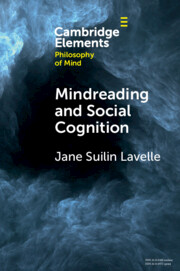Element contents
Mindreading and Social Cognition
Published online by Cambridge University Press: 17 January 2022
Summary
Keywords
- Type
- Element
- Information
- Series: Elements in Philosophy of MindOnline ISBN: 9781108946766Publisher: Cambridge University PressPrint publication: 10 February 2022
References
- 13
- Cited by



